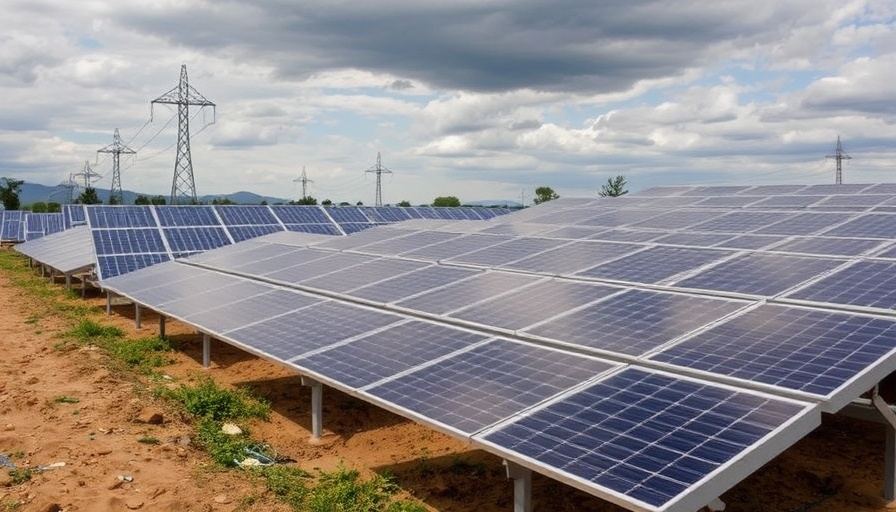
Understanding the Current Crisis in Solar Energy Supply
The current trajectory of solar energy in the U.S. is at a precarious crossroads, largely influenced by the Trump Administration's policies. These anti-solar actions are creating significant roadblocks at a time when the nation is seeing unprecedented growth in electricity demand. As stated recently, the demand for electricity is rising faster than any time since World War II, primarily driven by the increasing needs of new data centers and the overall electrification of various sectors.
The Impact of Policy on Solar Deployment
Despite solar energy establishing itself as the fastest-growing power source, the momentum is facing severe restrictions. The recent changes under the current administration have included the adjustment of tax policies and the introduction of new regulatory hurdles that inhibit solar and storage projects. According to industry experts, solar capacity additions have declined significantly due to the energy policies which are perceived as an act of energy subtraction.
Economic Consequences of Solar Restrictions
The effects of these anti-solar policies are profound. Recent reports indicate that projected solar deployments have dropped by 125 GW over a few months, equating to a substantial economic setback. This decline in solar deployment could impose higher electricity prices and weaken grid reliability, directly impacting American households and businesses. The connection between solar energy and economic health is stronger than many realize — losing significant capacity ultimately stalls economic growth.
The Dilemma of Growing Electricity Demand
As solar projects face restrictions, U.S. electricity demand continues to rise, presenting a critical challenge for the grid. With electricity needs expected to triple for data centers alone by 2028, the current delays in developing traditional energy sources like gas and coal further complicate the situation. The reality is clear: without solar energy to support the grid, it will be increasingly difficult to meet the growing demand.
Future Trends and Opportunities in Sustainable Energy
Despite current challenges, there remains potential for reversing course. Industry leaders emphasize the need for policies that support renewable energy development. Such changes could pave the way for an era where vibrant, clean energy technologies not only benefit the environment but also secure a reliable electricity supply for the future. For contractors and builders focused on sustainable practices, this shift could present tremendous opportunities in green building and innovative designs.
Looking Ahead: What Can Be Done?
For those engaged in sustainable construction practices, awareness is crucial. Staying informed about policy developments, advocating for supportive regulations, and pursuing innovative solutions in energy-efficient design are paramount for the industry’s growth. By pushing for the expansion of solar opportunities, builders can help shape a future where clean energy plays a fundamental role in our economy.
 Add Row
Add Row  Add
Add 




Write A Comment